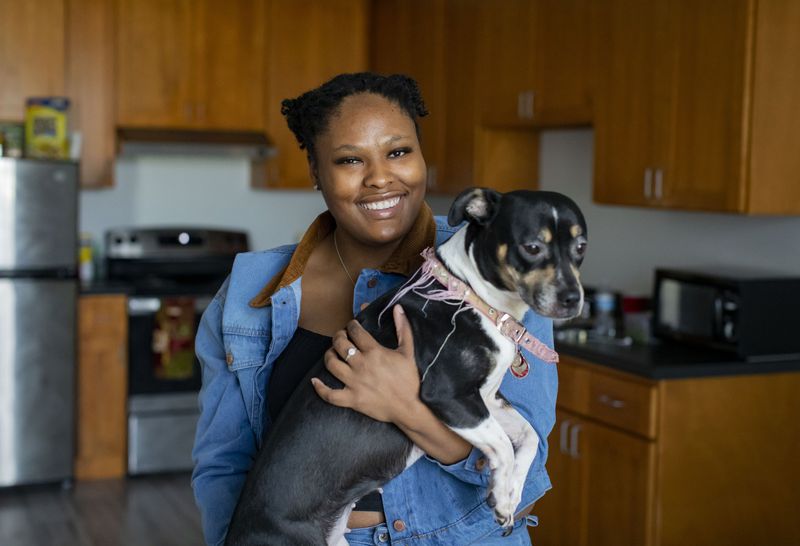Press: Chicago Tribune
Chicago is 120,000 units short on affordable housing. Here’s how the city and developers hope to fix that gap.

It may seem like the search for affordable housing is as elusive as a COVID-19 vaccination appointment — a long, arduous process that often includes a waitlist.
For Jeanette Freeman, 24, moving from her family’s South Side dwelling to live on her own in a one-bedroom apartment took her all of a year — from launching the search to submitting her name for a Chicago Housing Authority unit in Albany Park’s Oso Apartments.
“I was searching online for affordable housing, applying anywhere and everywhere,” she said. “And I said let me try CHA. I applied online to CHA’s site-based projects. Oso was just one of the apartments that pulled me in. I got in, after a week of applying. It was a blessing. I’m still in disbelief.”
Since then Freeman, a student and security guard, said her friends are applying to all the sites and links she sends them, in hopes they can find a residence in the same way and with the same speed.
Chicago has about 120,000 fewer units of affordable housing than what it needs, according to Marisa Novara, commissioner of the city’s Department of Housing. Recognizing this, the agency last month announced a reworked Affordable Requirements Ordinance in an attempt to close the affordable housing gap.
The shortage of affordable units is something developer and property manager The Habitat Co., whose affordable housing arm manages more than 13,000 affordable units, is trying to address. Its latest endeavor is 43 Green — a $100 million mixed-use development of three buildings next to the 43rd Street Green Line stop in the Grand Boulevard community area.The first building will contain 99 apartments, half with market-rate rents and half for residents earning no more than 60% of area median income, which is $55,920 for a family of four. The ground floor will contain retail space. Construction is expected to start later this year.
The development is part of Mayor Lori Lightfoot’s Invest South/West initiative to boost investment on the city’s South and West sides. It coincides with a draft of the city’s first plan for Equitable Transit-Oriented Development, also known as eTOD, which the city defines as “development that enables all people, regardless of income, race, ethnicity, age, gender, immigration status or ability, to experience the benefits of dense, mixed-use, pedestrian-oriented development near transit hubs.”